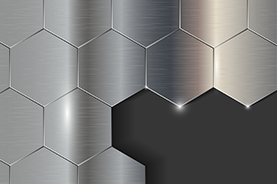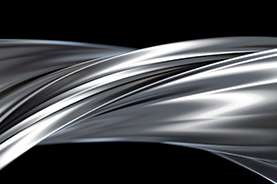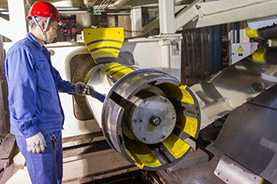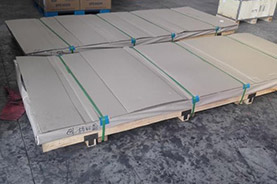Production process of seamless steel tube plant
Source:XHD Metals Time:15 March 2021
Cold drawn (rolled) seamless steel pipe in seamless steel tube factory: round tube billet→heating→piercing→heading→annealing→pickling→oiling (copper plating)→multi-pass cold drawing (cold rolling)→blanket→heat treatment→ Straightening → hydraulic test (flaw detection) → marking → storage
Hot rolling of seamless steel pipe factory (extruded seamless steel pipe): round tube billet→heating→perforating→three-roll cross-rolling, continuous rolling or extrusion→tube removal→sizing (or reducing)→cooling→straightening→water Compression test (or flaw detection) → marking → storage is made by perforating steel ingots or solid tube blanks into capillary tubes, and then hot rolling, cold rolling or cold rolling. The factory specifications of large-diameter thick-walled steel pipes are expressed in millimeters of outer diameter * wall thickness. Seamless steel pipes are divided into two types: hot-rolled and cold-rolled (dial) seamless steel pipes. Hot-rolled seamless steel pipes are divided into general steel pipes, low- and medium-pressure boiler steel pipes, high-pressure boiler steel pipes, alloy steel pipes, stainless steel pipes, petroleum cracking pipes, geological steel pipes and other steel pipes. In addition to cold-rolled (dial) seamless steel pipes in the seamless steel pipe factory, there are general steel pipes, low and medium pressure boiler steel pipes, high-pressure boiler steel pipes, alloy steel pipes, stainless steel pipes, petroleum cracking pipes, and other steel pipes, as well as carbon thin-walled steel pipes and alloys. Thin-walled steel pipes, stainless thin-walled steel pipes, special-shaped steel pipes. The outer diameter of the hot-rolled seamless pipe of Tongren large-diameter thick-walled steel pipe factory is generally greater than 32mm, and the wall thickness is 2.5-75mm. The diameter of cold-rolled seamless pipe can be up to 6mm, the wall thickness can be up to 0.25mm, and the outer diameter of thin-walled pipe can be up to 5mm. The wall thickness is less than 0.25mm, and the dimensional accuracy of cold rolling is higher than that of hot rolling.
Hot rolling, as the name suggests, the temperature of the rolled piece is high, so the deformation resistance is small, and a large amount of deformation can be achieved. Taking the rolling of steel plate as an example, the thickness of the continuous casting billet is generally about 230mm, and after rough rolling and finishing rolling, the final thickness is 1-20mm. At the same time, due to the small width-to-thickness ratio of the steel plate, the dimensional accuracy requirements are relatively low, and the shape problem is not prone to occur, and the crown is mainly controlled. The requirements for the organization are generally achieved through controlled rolling and cooling, that is, controlling the start-rolling temperature and final-rolling temperature of finishing rolling.
- Prev:Reasons for the prestress remaining on the galvanized square pipe
- Next:No Next









